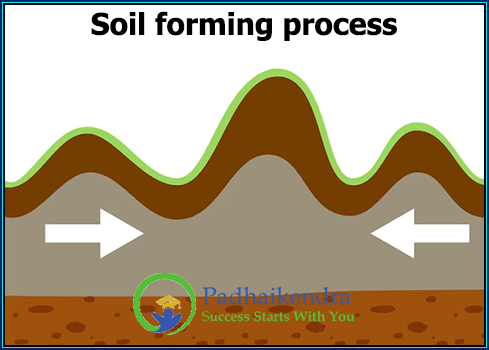Soil forming processes are the various natural processes that occur over time to form soils. These processes can be physical, chemical, or biological in nature, and can vary depending on factors such as climate, topography, and vegetation.
Some of the main soil forming processes include:
- Weathering: This is the physical and chemical breakdown of rocks and minerals that make up the parent material of soil. It can be caused by factors such as temperature changes, water, wind, and plant roots.
- Erosion: This is the process by which soil is transported by water, wind, or gravity. Erosion can cause loss of topsoil and nutrient depletion.
- Deposition: This is the process by which soil particles are deposited in a new location, usually through the action of water or wind.
- Leaching: This is the movement of dissolved minerals and nutrients through the soil profile, often caused by water moving downward through the soil.
- Pedogenesis: This is the process by which soil develops distinct layers, or horizons, with different physical and chemical properties.
- Organic matter accumulation: This is the accumulation of organic matter, such as dead plant and animal material, on the soil surface. This organic matter can help improve soil structure and fertility.
- Biological activity: This includes the activities of plants, animals, and microorganisms that live in and interact with the soil. Biological activity can help improve soil fertility by cycling nutrients and breaking down organic matter.
These processes can occur over different time scales and with varying intensities depending on factors such as climate, vegetation, and topography. Understanding soil forming processes can help soil scientists and land managers better manage and conserve this important resource.





